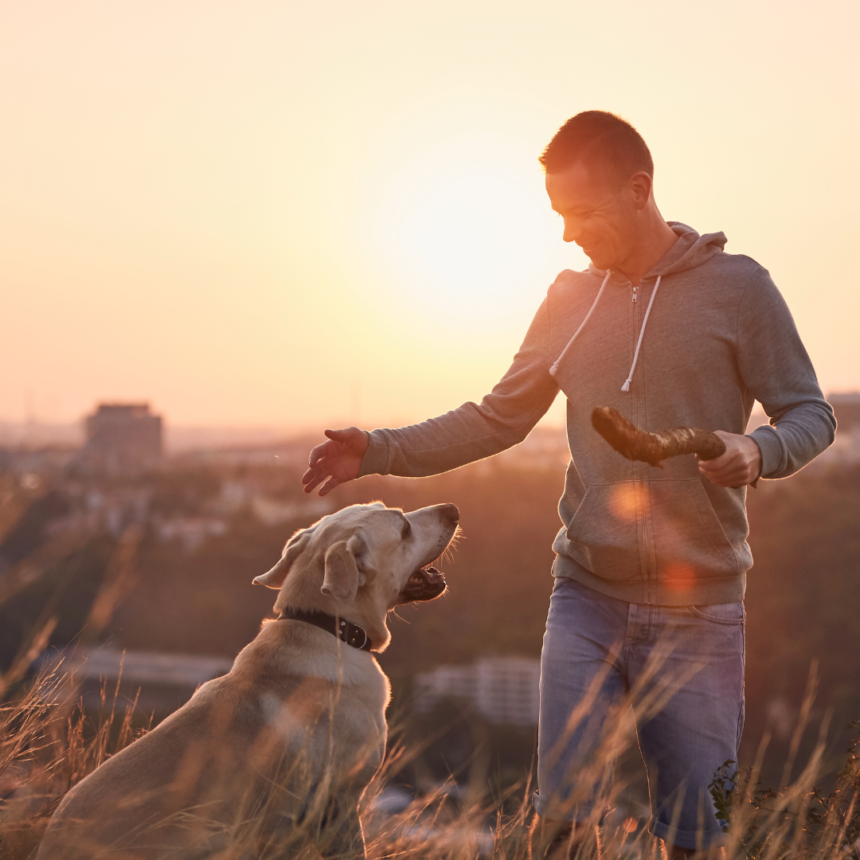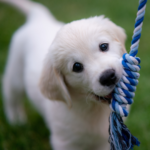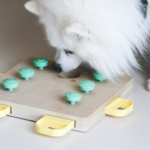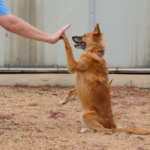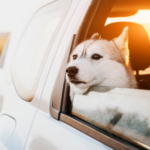Introduction
In the realm of dog training, few commands are as vital as recall. The ability to have your dog come when called is not just a matter of convenience; it’s a crucial aspect of their safety and well-being. This article aims to delve into the intricacies of mastering recall, offering insights, solutions, and practical tips to ensure a reliable response from your furry companion.
Understanding the Importance of Recall
Recall, in the context of dog training, stands as one of the most crucial commands for the safety and well-being of your furry companion. The ability to have your dog come when called is not merely a convenience but a fundamental aspect of responsible pet ownership. Recall serves as a vital tool in ensuring your dog’s safety during various situations, such as off-leash walks, visits to the park, or encounters with other animals. It promotes a sense of trust and communication between you and your canine friend.
Recall is not just about obedience; it’s a means of building trust and strengthening the bond between you and your dog. Positive experiences during training create a positive association with the recall command, making it more likely for your pet to respond eagerly.
Challenges in Recall Training
Training a dog to come when called, also known as recall, is a fundamental aspect of obedience that many dog owners find challenging. While the command is crucial for safety and effective communication, several common challenges may arise during the training process.
One of the primary challenges is distractions. Dogs are naturally curious, and various stimuli in the environment can divert their attention away from the recall command. This can be particularly challenging in outdoor settings where there are other animals, scents, or even unfamiliar people.
Fear and anxiety also pose obstacles to effective recall training. Some dogs may associate certain environments or experiences with negative emotions, making them hesitant to respond to the recall command. This fear can stem from past negative encounters or a lack of positive reinforcement during training.
Stubborn behavior is another common challenge. Some dogs, especially those with strong-willed personalities, may resist coming when called simply due to their independent nature. This can be frustrating for owners who want reliable recall behavior.
To address these challenges, incorporating positive reinforcement techniques is essential. Start training in a controlled environment with minimal distractions and gradually progress to more challenging settings. Use high-value treats or rewards to motivate your dog, creating a positive association with the recall command.
Consistency is key. Ensure that every family member or caregiver uses the same recall command and rewards to avoid confusion. Make training sessions short, enjoyable, and frequent to maintain your dog’s interest and focus.
Practical Training Techniques
Enhancing dog recall is a crucial aspect of training that contributes to a well-behaved and safe canine companion. While various techniques can prove effective, it’s essential to recognize potential challenges and implement practical solutions to ensure successful recall training.
One common challenge is inconsistency in commands and rewards. Dogs thrive on routine and clear communication. Inconsistencies in the recall command or varying rewards can confuse them. To overcome this, establish a consistent recall cue and use the same positive reinforcement consistently. This clarity reinforces the association between the command and the desired behavior.
Another challenge is the reliance on treats. While treats are valuable motivators, dogs may become overly dependent on them. To address this, gradually reduce the frequency of treat rewards as your dog becomes more reliable in responding to the recall command. Incorporate praise, play, or other forms of positive reinforcement to maintain engagement.
Distractions in real-world environments pose a significant hurdle. Dogs may find it challenging to recall amidst various stimuli such as other animals, people, or enticing scents. To combat this, gradually expose your dog to different environments, starting with low-distraction areas and progressing to more challenging settings. This gradual exposure builds their ability to focus amidst distractions.
Consistent, positive reinforcement remains a cornerstone. Use a combination of treats, praise, and play to keep training sessions engaging. Gradually increase the difficulty level as your dog becomes more proficient, ensuring that each success is celebrated. Incorporate intermittent reinforcement, rewarding your dog at varying intervals. This strategy helps maintain a strong association between the recall command and positive outcomes, reducing predictability.
Regular practice in a controlled environment is essential. Establish a dedicated recall training routine, reinforcing the command in a secure space before progressing to more challenging scenarios. This systematic approach builds confidence and reliability in your dog’s recall abilities.
Establishing a Recall Routine
A well-established recall routine is a cornerstone of effective dog training, fostering a sense of trust and reliability between the owner and their canine companion. One of the pivotal components is the establishment of clear and consistent recall commands. Dogs thrive on routine, and by ensuring that commands are consistently communicated, the canine friend can better understand and respond to the owner’s cues. Positive reinforcement, such as treats, praise, or play, serves as a potent motivator in reinforcing the desired behavior. However, challenges may arise if the rewards become predictable, necessitating the need for variety and intermittent use to maintain the dog’s enthusiasm.
An additional layer to a successful recall routine involves gradual exposure to distractions and training in different environments. Dogs, by nature, are influenced by their surroundings, and introducing controlled distractions during training helps them navigate real-world scenarios effectively. It’s essential to start in a controlled environment and gradually progress to more challenging situations, reinforcing the recall behavior in diverse settings.
Consistency is key in building a strong recall routine. By maintaining a consistent schedule and systematically increasing the level of difficulty in training exercises, dog owners can instill a reliable recall response. Regular practice, patience, and positive reinforcement contribute to the development of a robust recall routine that ensures the dog’s safety and strengthens the bond between owner and pet.
Addressing Unique Situations
Addressing dog recall in unique situations requires a nuanced approach to training that goes beyond the standard commands. While a solid recall routine is fundamental, unique situations may pose challenges that demand specialized attention. One common issue is recall in high-stimulus environments, where distractions are abundant. Dogs, being naturally curious, can find it challenging to focus amid exciting stimuli such as other animals, crowds, or enticing scents.
In such situations, gradual exposure becomes pivotal. Introducing controlled distractions during training helps acclimate the dog to novel stimuli, allowing them to learn to respond to recall commands even in unique and stimulating environments. However, it’s crucial to progress at the dog’s pace, ensuring that they remain engaged and responsive.
Another unique scenario is recall during play or off-leash activities. While play is an integral part of a dog’s life, it can present challenges when trying to call them back. One effective solution is integrating recall commands into play sessions. Associating the recall command with positive experiences, like continuing the play or receiving treats, reinforces the behavior. Additionally, employing a consistent recall tone specifically for playtime distinguishes it from routine commands, preventing confusion.
Recall in emergency situations is another aspect that merits attention. Dogs must reliably respond to recall commands, especially in situations where their safety is at risk. Training for emergencies involves using distinct recall cues and practicing them regularly in various scenarios to ensure the dog associates the command with an immediate return.
In essence, addressing dog recall in unique situations involves tailoring training to specific challenges, providing consistent exposure, and associating recall commands with positive experiences. This approach enhances a dog’s responsiveness across a spectrum of situations, contributing to a well-rounded and reliable recall.
Resourceful Tools for Recall
Ensuring a reliable dog recall is not only about effective training but also leveraging resourceful tools that complement the training process. While many tools are available, understanding their applications, potential challenges, and practical solutions is key to achieving optimal recall success.
One essential tool for dog recall is a long-line or training lead. Despite its benefits, challenges may arise, such as entanglement or handling difficulties. To address this, opting for a lightweight, non-tangling lead and gradually increasing its length during training helps mitigate these challenges.
Electronic training collars, another popular tool, provide remote communication with the dog. However, misuse or improper settings can lead to discomfort or confusion. Ensuring proper training on collar usage, including appropriate settings and positive reinforcement, is crucial to overcome these challenges.
The use of high-value treats as a positive reinforcement tool is widespread, but some dogs may lose interest or face dietary concerns. Varied treat options and rotating them to sustain interest while considering a dog’s dietary needs can address these challenges effectively.
Modern technology introduces smart devices like GPS trackers for enhanced recall reliability. Challenges may include device weight or discomfort for the dog. Selecting lightweight, comfortable devices and introducing them gradually ensures dogs adapt comfortably.
For recall training in open spaces, a whistle can be a valuable tool, but its misuse or inconsistent application might lead to confusion. Proper training on whistle commands, along with treating it as a distinct recall cue, resolves such issues.
Conclusion
In conclusion, mastering recall is a journey that goes beyond obedience – it’s about creating a strong bond and ensuring the safety of your beloved pet. By understanding the nuances of recall training and implementing the provided strategies, you’re not just teaching a command; you’re fostering a deeper connection with your furry friend. Embrace the process, be patient, and witness the transformation as you and your dog embark on this rewarding training adventure.


